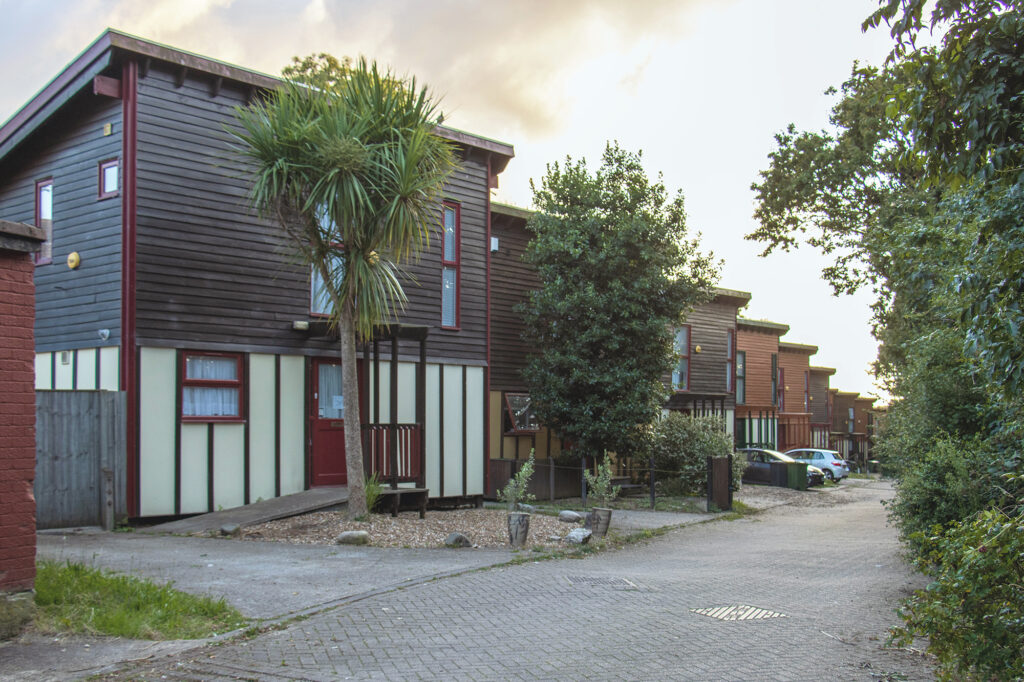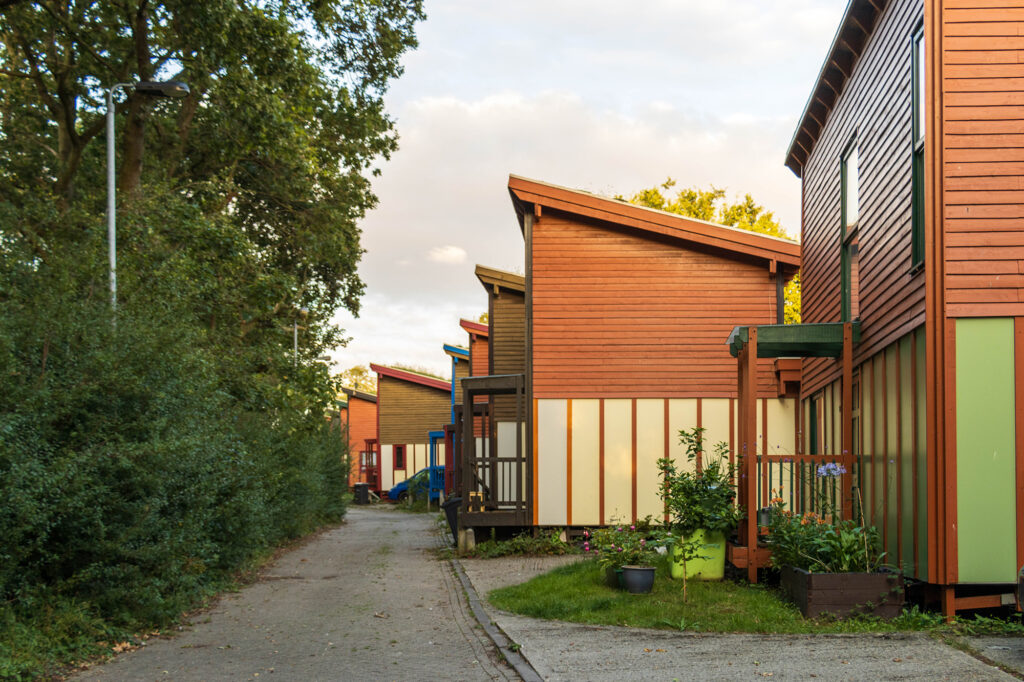18. Advantages of Developing in a Group
18.1. Embracing Lewisham’s history
Lewisham already has several neighbourhoods that were developed as a result of groups of people coming together to develop a collection of homes. Examples of this can be found across the borough, including at Nubia Way, Walters Way and Segal Close.
This history is an asset to Lewisham and the Council is keen to ensure that these types of developments can continue. At the time of writing two new community land trust (CLT) developments have obtained planning permission and will soon start on site.
Church Grove
The Rural Urban Synthesis Society (RUSS) is a CLT which was formed in 2009 with the view of facilitating community led housing, and now has over 800 members.
RUSS has worked with architects Architype to secured planning for a project on Church Grove in Ladywell, which will provide 33 new homes and a community hub. As well as the benefits of high quality, customised homes, the nature of developing as a group has allowed for other more unusual but highly desirable features, including:
Generous outdoor amenity
Allotment space
Shared community space
Braysted Close
Lewisham Citizens (part of Citizens UK) is working with London CLT to bring forward its first direct development on a backland garage site in Sydenham. Residents chose to work with architects Archio following a ‘pick an architect’ event where residents were able to discuss the project with multiple different practices. The proposed development will provide 11 new, genuinely and permanently affordable homes.
Phoenix Community Housing
One of the borough’s main largest housing providers is Phoenix Community Housing, a not-for-profit, resident-led housing association with tenants and leaseholders forming the majority of the management board. It manages more that 6,000 homes in Lewisham and is currently building new homes, including a recent award-winning development at Hazelhurst Court designed by architects Levitt Bernstein.
18.2. How to form a group
By joining together as a group your collective power is increased, opening opportunities to purchase sites and harness the talents of different individuals. Some of the benefits of this include:
More control and input in the design
Collective pool of resource and individual skills
Increased finance opportunities
Economy of scale
Building a long-term community
Working collectively often results in the process taking longer overall, but if successful the benefits usually outweigh these drawbacks.
For further advice on what groups already exist and how to form new groups refer to the Community-led Housing London Hub website at communityledhousing.london.
18.3. Working with neighbours
While individual development of small plots of land is vital to meeting Lewisham’s housing need, when adjoining landowners come together it can result in a more efficient development which has the potential to deliver a greater number of homes compared to each owner acting alone.

